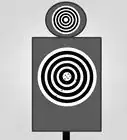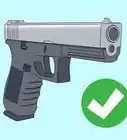wikiHow is a “wiki,” similar to Wikipedia, which means that many of our articles are co-written by multiple authors. To create this article, 22 people, some anonymous, worked to edit and improve it over time.
This article has been viewed 278,941 times.
Learn more...
Malfunctions (also, erroneously, known as "jams") are a way of life in semi-automatic handguns. Though most modern guns are relatively reliable, it is always a good idea to be prepared, because malfunctions seem to happen at the most inopportune times. This article also covers reloading, which is not a malfunction, but is yet another reason why your gun may not fire when you want it to. There are two types of reload situations. One, you've fired all your rounds, and the magazine is empty with the slide or bolt locked back. This is called an Emergency or Normal Reload. The second, is a "tactical reload", where rounds have been fired, but the weapon still has only about a round or two in it. You can use this opportunity to drop your nearly empty or empty magazine and load a new one.
Steps
Emergency Reload
-
1Identify the need. An emergency reload is needed when you have spent all the rounds from your magazine and your slide is locked back.
-
2Grab a fresh magazine (likely from a magazine pouch). This happens after the slide has locked back on an empty magazine.Advertisement
-
3Move the fresh magazine toward the gun, as you do this...
-
4Eject the empty magazine. Be sure not to lose your old magazine, and bring your new magazine into place below the magazine well. (they should essentially pass each other during the drill).
-
5Insert the magazine. Place the rear of the magazine against the rear of the magazine well of the gun, align the two, and with some force (though there should be little resistance)...
-
6Seat the magazine using the heel of your palm. Give it a light tap, you should feel it click into place.
-
7Roll your hand over the top of the slide and pull it back toward your chest. Be sure not to put your fingers in the slide opening, or anywhere else they might get caught.
-
8Release the slide, so it can go forward with full force. This will seat the next round in the chamber, preparing it for discharge.
Tactical Reload
-
1Determine if it is safe to perform a tactical reload. Only execute this if you encounter a lull in the gunfight and are able to place yourself behind cover. You know you have spent some rounds from the current magazine and want to prepare for whatever may come next.
-
2Reach to your magazine pouch (or other magazine holder and a pocket maybe; make sure you have a full magazine).
-
3Move back to the gun and eject the partially depleted magazine into your hand.
-
4Put the magazine in your pocket (separate from fresh magazines).
-
5Grab the fresh magazine you touched earlier and insert it into the gun in the same fashion as the emergency reload, but this reload doesn't require manipulation of the slide.
-
6Practice at the range. You should be able to feel and react immediately when the gun does not fire. When you pull the trigger, if you feel a "click", execute a malfunction type-1 clearing. If there is no click, look at the malfunction and act accordingly (remember it may be an empty magazine too). After shooting for some time you should be able to feel when the magazine is depleted, allowing you to execute emergency reloads very quickly. Over time you will begin to notice that the weapon will feel and sound different after firing the last round.
Type-1 Malfunction
-
1Identify the malfunction. Often a type-1 malfunction is a misfeed, in which a round was not loaded into the chamber (e.g. you didn't rack the slide after you loaded a magazine, or the magazine wasn't seated enough to load a round).
-
2Make sure the malfunction is not a "squib load". This is a relatively dangerous malfunction where there is not enough force to propel the projectile out of the barrel. In semi-automatic pistols, a squib is often easily noticeable, as the slide will not cycle and a new round will not be chambered. If a squib load happens, remove the magazine and clear the obstruction immediately.
-
3Make sure the malfunction is not a "hang fire", in which the burning of the cartridge's propellant is delayed. Only attempt to immediately clear the malfunction during a live-fire, real confrontation. This is due to the risk of the round eventually firing. If you experience a hang fire, keep the firearm pointed down range for at least 10 seconds before attempting to clear.
-
4Correct the Malfunction. The quickest way to do this is through immediate action. With a semi-automatic pistol, pull the slide back, ejecting the last round. Observe the ejection and the round. If the lead is still on the bullet, you know that the round didn't fire. If the lead is gone, it may indicate a weapon malfunction. Observe the chamber. Check for double feeds, or things that don't belong. Release the slide, seating the next round. Deactivate the safety and attempt to fire the weapon. If it still fails to fire, remove the magazine and eject the current round, and turn the weapon over to a gun expert for repair.
-
5Practice:
- Load a full magazine into the gun with an empty chamber.
- Point at the target, pull the trigger, feel the "click".
- With the heel of your palm hit the bottom of your magazine (with some fervor; this is the "tap").
- Then twist your gun 90-degrees to the right (so the ejection port is down) and...
- Rack the gun by pulling the slide straight back and letting go; do not ride the slide forward, let it slam (this the "flip" and "rack" part of the drill). This will drop a possibly dud round out of the chamber and load a new round into the chamber.
Type-2 Malfunction
-
1Identify the malfunction. When you pull the trigger, there is no "click" (or "boom"). Sticking out the chamber is visible brass. This brass is what gives the type-2 malfunction the name "the stovepipe". It is also known as a failure to eject.
-
2Fix the malfunction. The solution is the same as a type-1 malfunction: tap, rack/flip.
-
3Practice:
- Pull back the slide to expose an empty chamber, lock empty brass so it is sticking out of the chamber.
- Load a full magazine into the gun.
- Point at the target, pull the trigger, take note that there is no "click".
- Visually see the brass sticking out of the chamber.
- With the heel of your palm hit the bottom of your magazine (with some fervor — this is the "tap").
- Then twist your gun 90-degrees to the right (so the ejection port is down) and...
- Rack the gun by pulling the slide straight back and letting go; do not ride the slide forward, let it slam (this is the "flip" and "rack" part of the drill). This will drop the brass out of the chamber and load a new round into the chamber.
Type-3 Malfunction
-
1Identify the malfunction. The fired casing does not get pulled out of the chamber and a new round has now being loaded into the breech. This is known as a double-feed and a failure to extract.
-
2Fix the malfunction:
- Grab the slide and Lock it back (optional)
- Press the magazine release and (while your magazine may fall out on its own normally, a type-3 will prevent it from doing so now) strip the magazine from the gun.
- You have an option here. Either you drop the magazine, or practice retention where you hold onto the magazine to continue to use it.
- Grab the slide again and rack it hard three times.
- Reach for a fresh magazine (or use the one in retention), put it in the gun (same as the tactical reload) #*Rack the slide one more time to load a round into the chamber.
Community Q&A
-
QuestionIs it for possible an accidental discharge to occur when there is a type 3 malfunction?
 Community AnswerRule number one of being a responsible gun owner, is "always expect the unexpected and always treat the gun as if it's loaded." Although it is very uncommon for a gun to misfire during a class 3 malfunction, I will not say it is impossible. I only own Glock hand guns, so I can only speak for strike fire weapons. Typically during a class 3 double feed the new unfired round will not be in alignment with the firing pin, thus making an accidental discharge highly unlikely. I would recommend taking classes with a trained firearms instructor on clearing malfunctions before practicing on your own.
Community AnswerRule number one of being a responsible gun owner, is "always expect the unexpected and always treat the gun as if it's loaded." Although it is very uncommon for a gun to misfire during a class 3 malfunction, I will not say it is impossible. I only own Glock hand guns, so I can only speak for strike fire weapons. Typically during a class 3 double feed the new unfired round will not be in alignment with the firing pin, thus making an accidental discharge highly unlikely. I would recommend taking classes with a trained firearms instructor on clearing malfunctions before practicing on your own. -
QuestionWhy will the Beretta U22 Neoos not fire the last round fed into it?
 Community AnswerDoes this happen every time? It may just be the fault with the round. Check that the round works (check the primer, or load it as not the last round).
Community AnswerDoes this happen every time? It may just be the fault with the round. Check that the round works (check the primer, or load it as not the last round).
Warnings
- Pistols are rarely the best weapon of choice for combat situations. Rifles and shotguns are more effective than pistols. Pistols are best for targets at 0–10 yards (0.0–9.1 m), shotguns are best for targets at 2–50 yards (1.8–45.7 m), and rifles are best for targets at 4–1,000 yards (3.7–914.4 m).⧼thumbs_response⧽
- This is written in a tactical perspective. If you have a type-1 malfunction the possibility for a "hang-fire", essentially a delayed ignition of a round exists. If you are not in a tactical situation, wait for at least a ten seconds before attempting to clear the malfunction.⧼thumbs_response⧽
- Be sure to know what is down range. Bullets can travel for miles, or can bounce and ricochet into unintended directions.⧼thumbs_response⧽
- All practicing should be done at the shooting range, obeying all safety rules, or in a legal and private location with an unloaded gun (or you can replace the rounds with snap-caps).⧼thumbs_response⧽
- Any firearm should only be shot in a safe and legal location. Be aware of state and local laws on use and transportation of a firearm, and follow them carefully. Laws change drastically between states, and can change between counties or even cities.⧼thumbs_response⧽
- A pistol can inflict serious injury or even death. Be sure to always point the pistol in a safe direction and never point it at something you do not intend to shoot.⧼thumbs_response⧽
- Safety first! Firearms are dangerous. Only use a pistol or other firearm if you know the weapon or have an experienced shooter directly supervising you. Treat every weapon as though it were loaded.⧼thumbs_response⧽
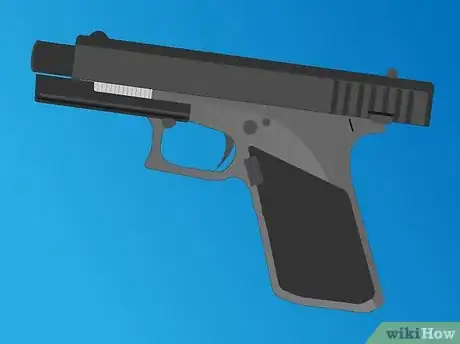
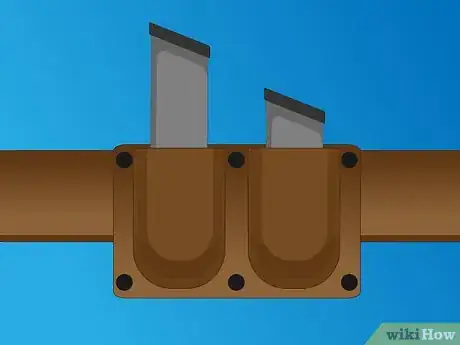
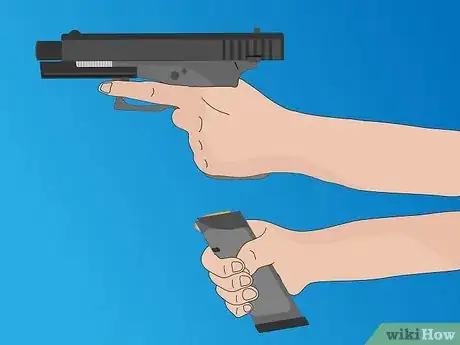
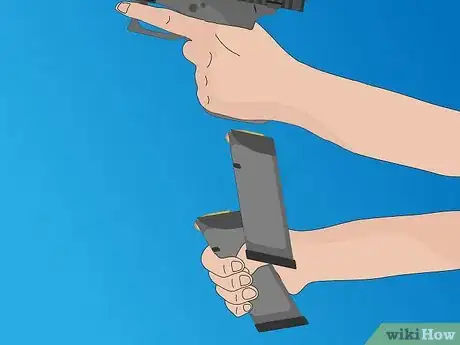
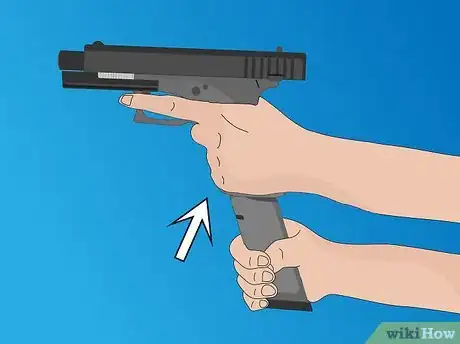
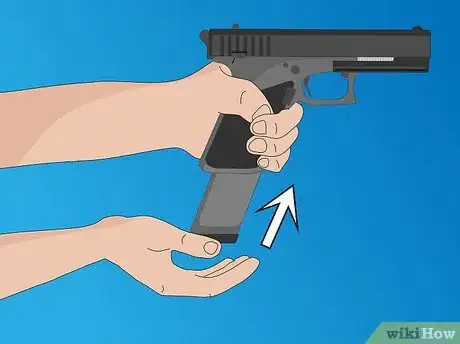
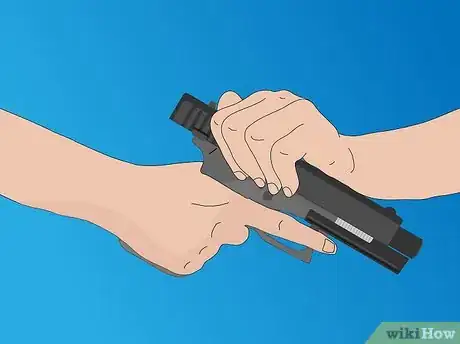
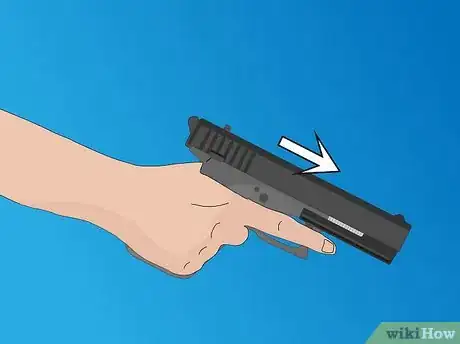
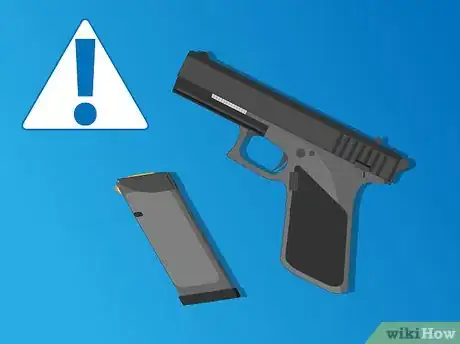
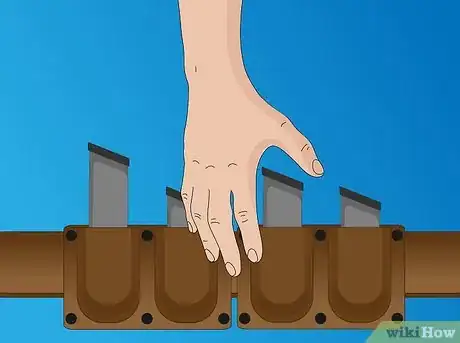
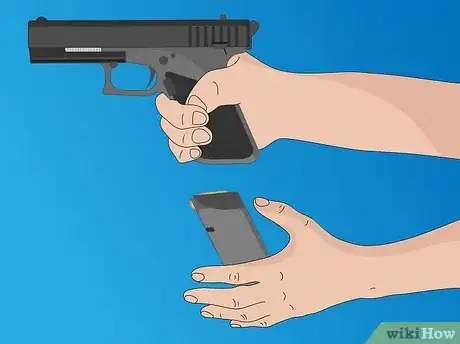
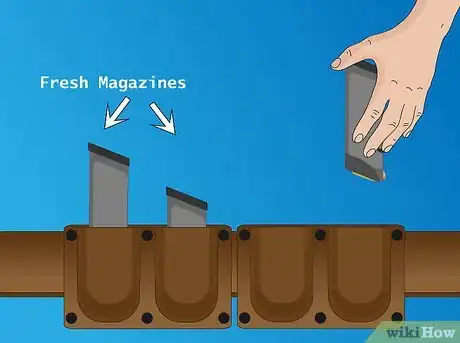
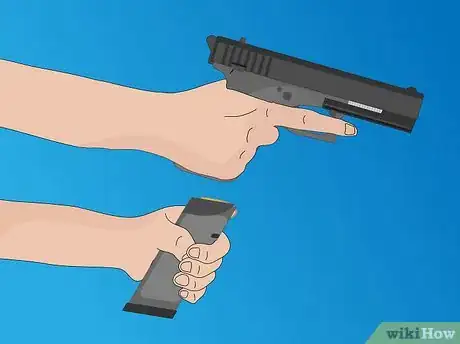
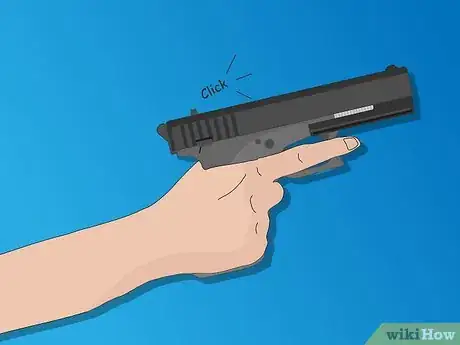
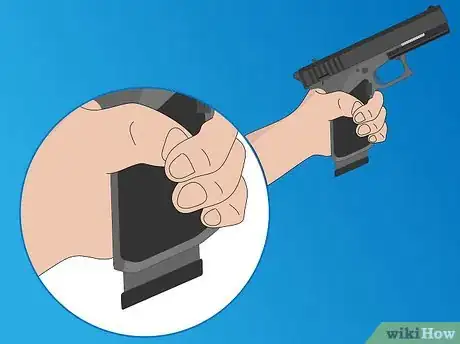
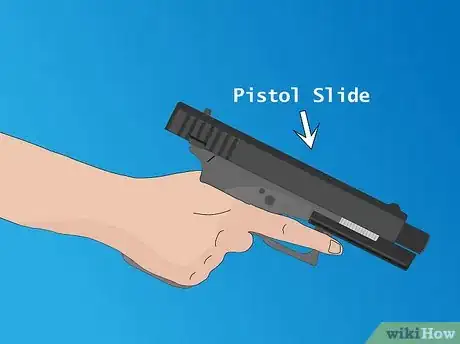
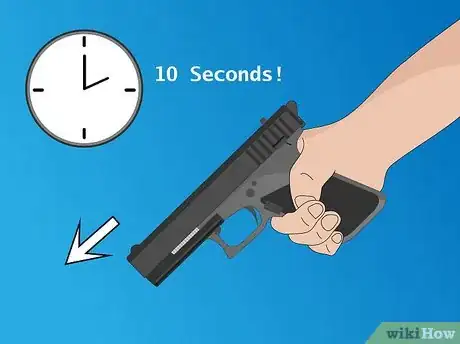
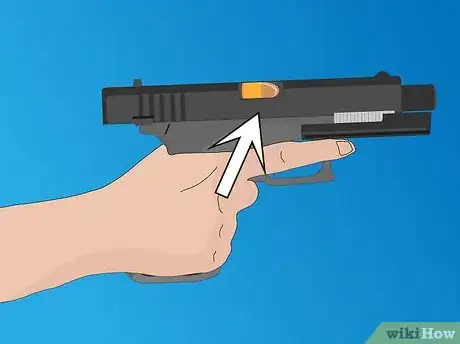
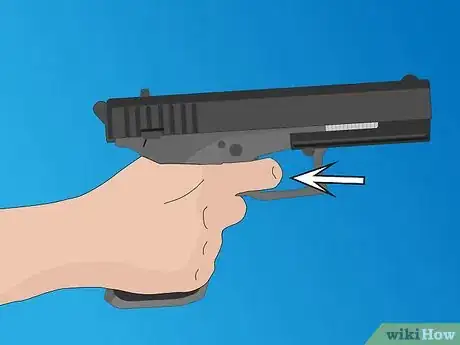
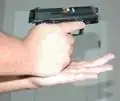

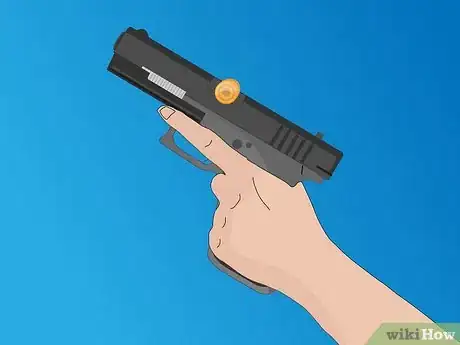
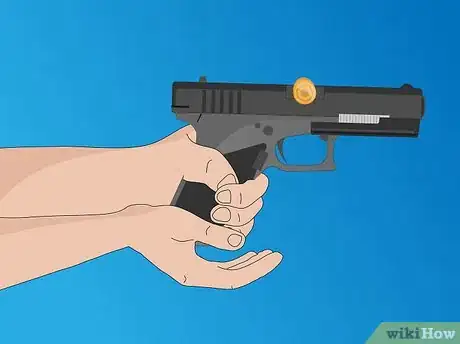
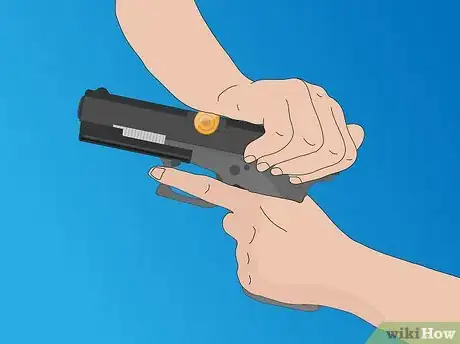


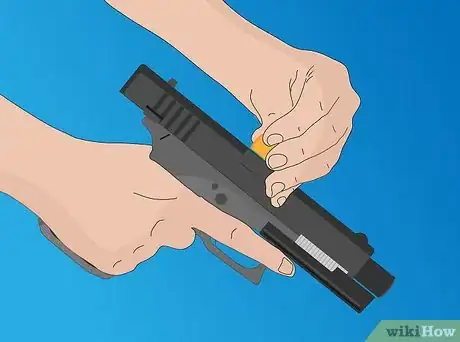
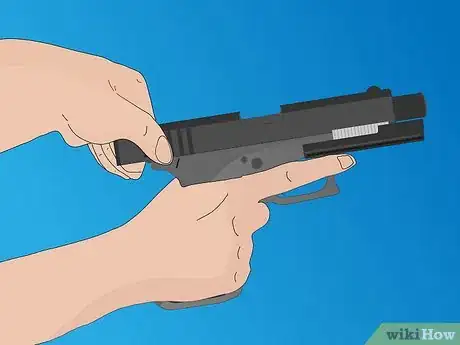


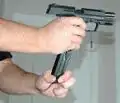

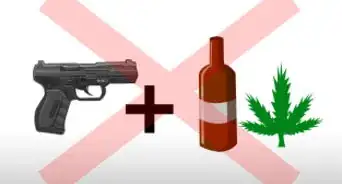
-Step-21-Version-3.webp)
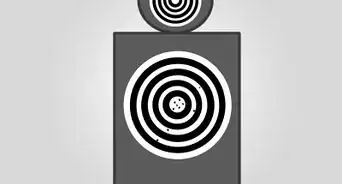
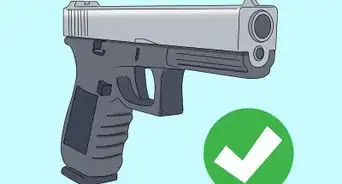
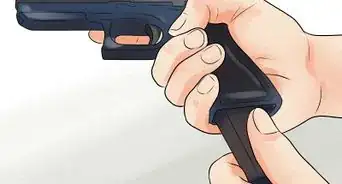
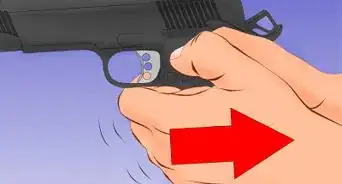
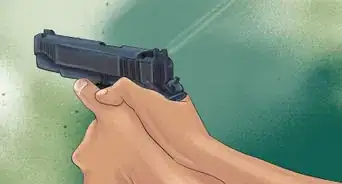
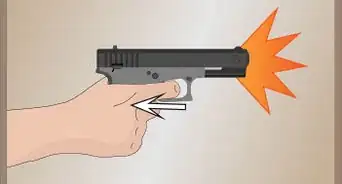
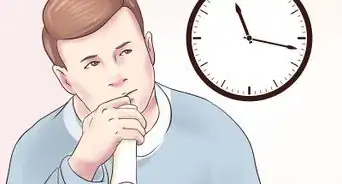
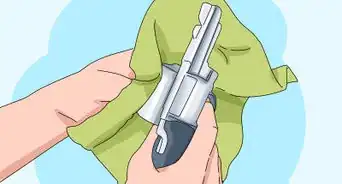
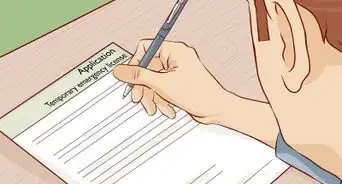
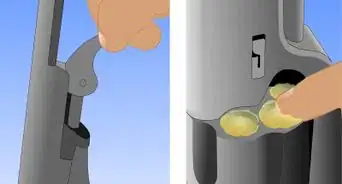
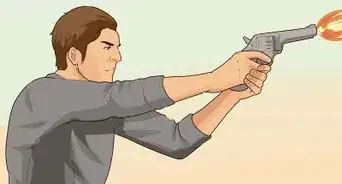
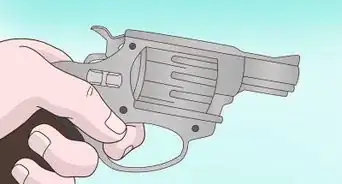







-Step-21-Version-3.webp)
